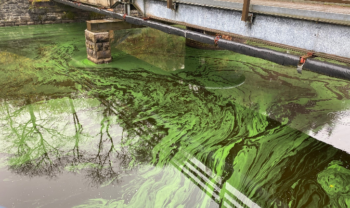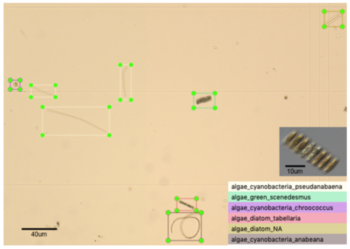Artificial Intelligence for Algal Monitoring
Competition: Breakthrough 3: Catalyst
Amount awarded: £385,159
Led by: Dŵr Cymru Welsh Water
Partners: Aigües Vic, Anglian Water, Bristol University, Cardiff University, United Utilities, Wessex Water
Project completion: June 2027
Water cycle tag: Water Abstraction and Storage
Ensuring drinking water is safe to drink requires constant monitoring and prediction of risk. This is true for the water quality risks associated with algae and cyanobacteria e.g., taste and odour compounds which are predicted to increase with frequency and intensity with climate change. Traditional algal monitoring is time consuming, resource intensive and does not provide sufficient data for predictive modelling of algal risks. Our project will use artificial intelligence (AI) to transform algal monitoring into a high-throughput, high-accuracy laboratory or field-based process for a fraction of the cost, allowing better risk prediction enabling water companies to take earlier, more cost effective and targeted actions.
“This funding will enable a significant leap forward in algal analysis and accelerate the use of algal data to predict water quality risks. This will provide benefits to customers and wider society, as it will better equip the water industry to tackle current and future algal related water quality challenges.” – Matthew Jones, Public Health Manager, Wessex Water
—
Update from the project (April 2025)
The first two years of the project have been focused on building a training data set. Bristol University has been manually undertaking microscopy and annotating the images with the correct taxonomy to the genus level, and further where they can. They have also been working on convolutional neural network production that’s training the machine learning models firstly to detect algal cells within images and then to classify them. They mainly spent time working on existing models and existing data sets not on freshwater micrography.
Cardiff University’s project will continue doing community-based analysis using the eDNA data itself; Bristol’s project will pivot into a benchmarking step next year, with their final stage being to undertake some high-resolution modelling using the hybrid. During January and February, Cardiff University were optimising how they use the microscopy samples Bristol have been looking at under a microscope. Recently, Cardiff University were faced with the challenge of how to identify 900+ samples, and finding a method that would both scale well and be robust. The team changed the DNA extraction method that they were using, which worked well.



